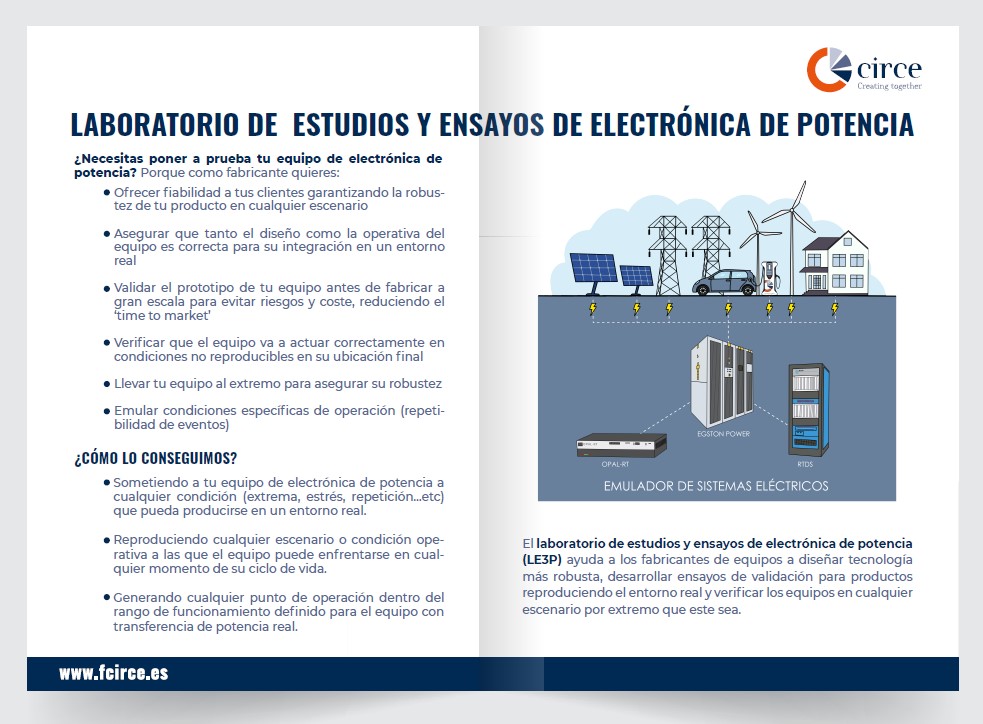RTDS tests
Ability to perform laboratory tests in real time to study the interaction of intelligent equipment with the electrical grid. It is possible to obtain information about the behavior of an intelligent equipment and its interaction with the grid.
Description of the service
The RTDS (Real Time Digital Simulator) laboratory provides us with the ability to perform real-time laboratory tests to study the interaction of intelligent equipment with the electrical grid.
These tests allow us to obtain information about the behavior of an intelligent equipment and its interaction with the grid, helping its development, debugging and validation prior to commercialization.
By operating the simulation in real time, the physical protection equipment can be connected in closed loop with the power system model. The flexible and controlled environment of the digital simulation allows the protection equipment to be subjected to virtually all types of faults and operating conditions. The closed-loop interaction of the protection system with the network model provides relevant information on both the performance of the relaying scheme and its effect on the power system.
The laboratory has 2 racks and 10 PB5 processor boards, as well as multiple digital and analog inputs and outputs. We work with IEC 61850 communication protocols (SV and GOOSE), IEC-103, DNP-3, C37.118-PMU, and voltage and current amplification equipment: DOUBLE ENGINEERING.
Share your challenge with us!
Value proposition
Testing of control and protection equipment in a safe laboratory environment
Verification and debugging of the behavior of intelligent equipment algorithms
Ability to anticipate phenomena that may appear on the network due to the connection of the equipment under test (FACTS, wind and solar generators...)
Study on how network conditions affect the equipment (harmonics, faults, connection and disconnection of loads and generators, energization of lines and transformers...).
Validation of the control or protection equipment prior connection of the power part to the electrical network




